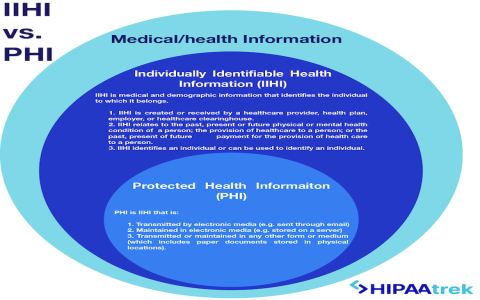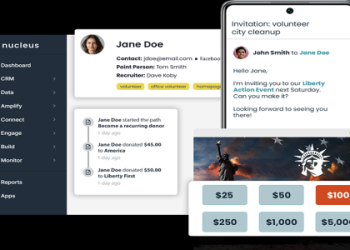stuff. You know, like keeping patient information safe and all that. Let’s break it down in a way that’s easy to understand, like I’m talking to my best friend over coffee.
Imagine you’re at a doctor’s office, and you give them your personal health information, like your medical history, diagnoses, and maybe even your insurance details. That’s super sensitive stuff, right? It’s like your deepest, darkest secrets, but in a medical context. Now, HIPAA, which stands for the Health Insurance Portability and Accountability Act, is a set of rules that makes sure your doctor keeps those secrets safe. It’s like a big, legal guardian for your medical info, making sure nobody snoops around where they shouldn’t.
Think of it like a giant lock on a vault, and the key is HIPAA compliance. If the vault is your doctor’s office, and the info inside is your medical stuff, only people with the key (meaning, those who are authorized under HIPAA) can open it.

HIPAA compliance isn’t just about keeping your medical records safe, though. It also has to do with how your doctor shares that info with others, like insurance companies or other healthcare providers. If they need to share that information, HIPAA makes sure it happens securely, like sending it in an encrypted message that only the intended recipient can unlock.
So, how does HIPAA compliance actually work? It’s more than just a bunch of rules. Think of it like a set of guidelines for keeping your medical info safe and sound. Here’s a breakdown:
1. The Privacy Rule
This rule is all about your rights and how your health information is used and shared. Think of it like the “Do Not Disturb” sign for your medical data. It sets limits on who can see your information and what they can do with it. For example, your doctor can’t share your info with your neighbor just because they’re curious.
2. The Security Rule
This rule is about keeping your health information secure from hackers and other bad guys. It’s like the strong, sturdy walls and a reinforced door of your medical information vault. This rule says that your doctor has to use strong passwords, encrypt data, and have backup plans in case something goes wrong.
3. The Breach Notification Rule
This rule is about what happens if someone accidentally or intentionally accesses your information without permission. Think of it like the security system that sounds an alarm if someone breaks into your vault. If your doctor’s office has a security breach, they have to tell you about it so you can take steps to protect yourself.
4. The Enforcement Rule
This rule sets out how HIPAA is enforced and what penalties can be applied if someone breaks the rules. Think of it like the police officer who keeps everyone in line and makes sure everyone follows the rules of the road. The Department of Health and Human Services (HHS) is responsible for enforcing HIPAA, and they can impose fines or other penalties on organizations that don’t follow the rules.
There are also other rules and guidelines within HIPAA, but these are the main ones to keep in mind. It’s not just about protecting your medical information, but also about building trust with your doctor and ensuring that your healthcare system is safe and reliable.
Now, let’s say you’re working for a healthcare organization and need to ensure your organization is HIPAA compliant. You might be asking, “How do I even start?” Well, there are a few key things to remember:
1. Get Training
First, you need to make sure everyone at your organization understands HIPAA and what it means. It’s like learning a new language, and everyone needs to be on the same page. There are lots of online courses and training materials available, so you can get up to speed quickly.
2. Implement Policies and Procedures
You need clear policies and procedures in place to ensure everyone at your organization knows how to handle patient information. This is like having a rulebook for how to keep things safe and secure. It includes things like how to handle electronic records, how to dispose of paperwork, and who has access to what information.
3. Conduct Risk Assessments
You need to identify any potential threats to patient information and figure out how to protect against them. It’s like going through a security checklist to make sure your organization is prepared for anything. This might involve things like checking your computer systems for vulnerabilities, ensuring you have strong passwords, and having backup plans in case of a disaster.
4. Monitor Compliance
You can’t just set up HIPAA compliance and forget about it. You need to monitor your organization’s compliance on an ongoing basis to ensure that you’re still following the rules. This could involve things like conducting audits, reviewing employee training records, and staying up-to-date on any changes to HIPAA regulations.

HIPAA compliance is a big responsibility, but it’s also an essential part of creating a safe and trustworthy healthcare system. It’s about protecting patient information and ensuring that everyone in the healthcare industry is held accountable for keeping that information secure.
So, next time you’re at a doctor’s office or interacting with a healthcare provider, think about all the work that goes on behind the scenes to ensure your medical information is kept private and safe.
Think about how HIPAA compliance helps to build trust in the healthcare system, making sure that you can get the best possible care without worrying about your personal information getting into the wrong hands. It’s a complex system, but it’s all about making sure your information is protected.
Let me know if you have any other questions about HIPAA compliance. I’m happy to answer them.
And remember, HIPAA is a big deal, but it’s all about making sure you’re treated with respect and that your information is handled with care.





















